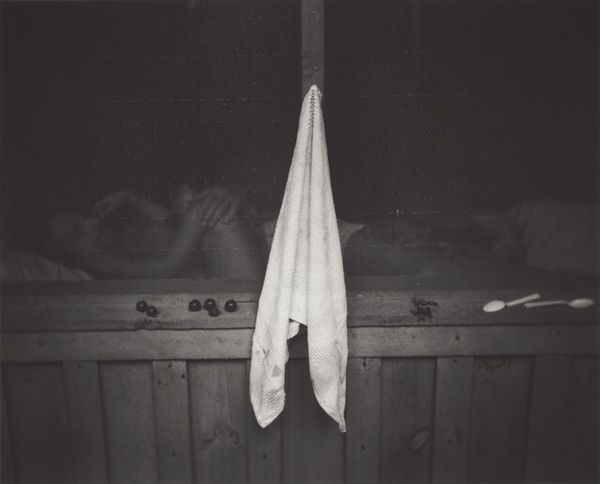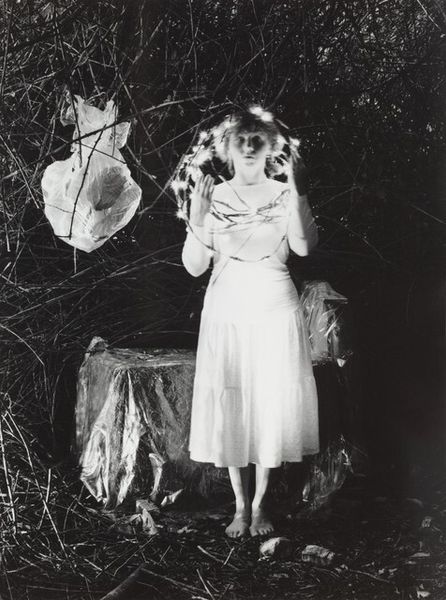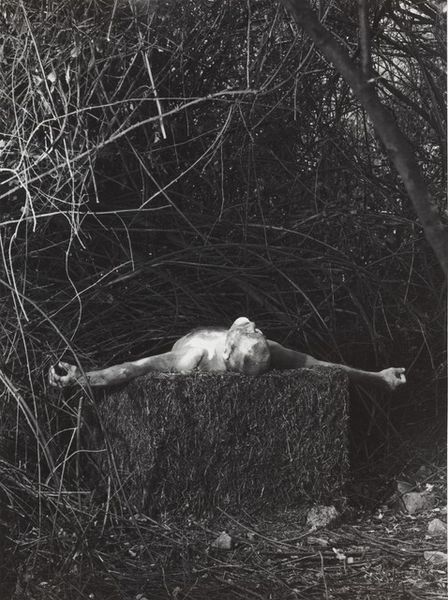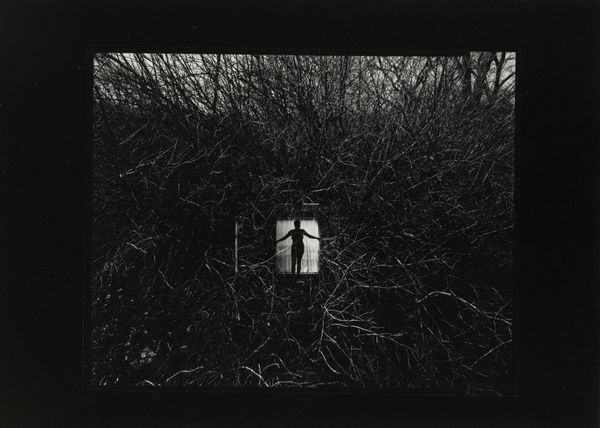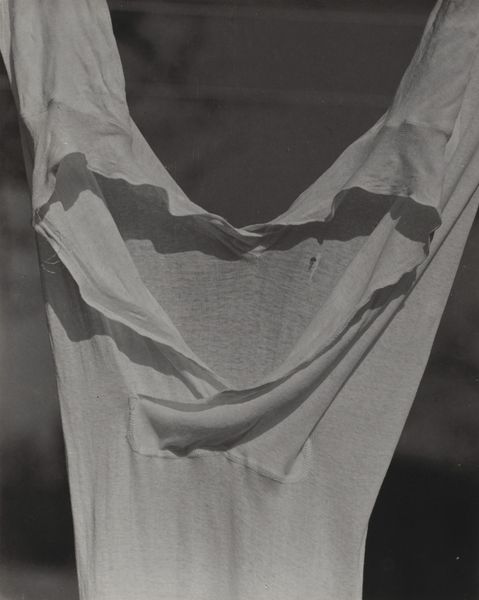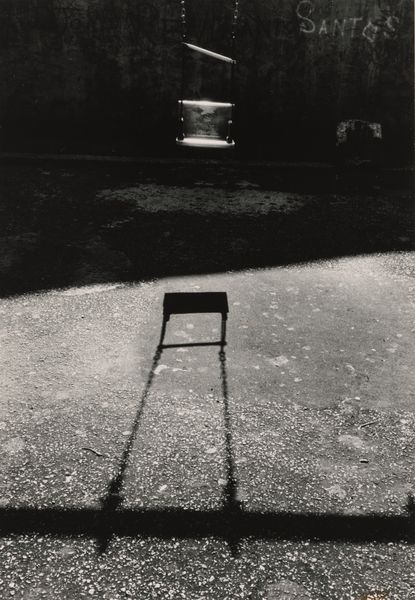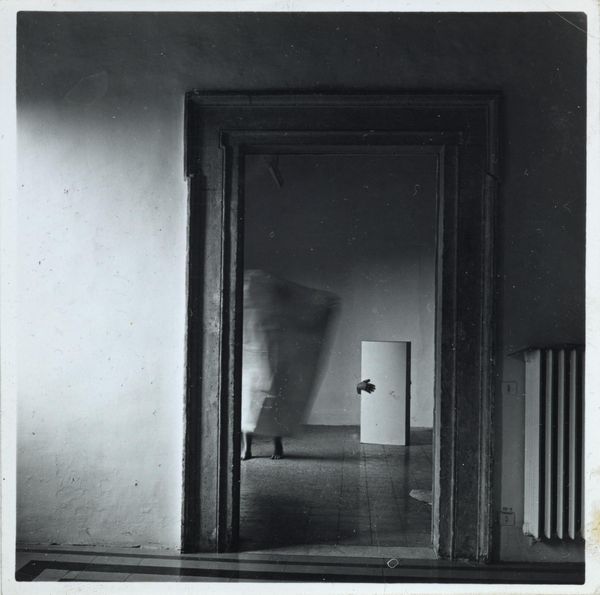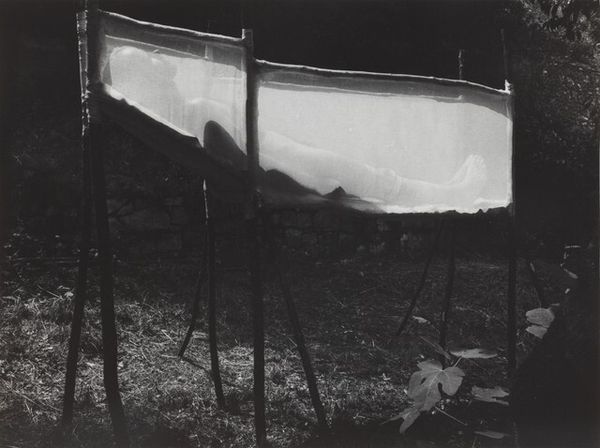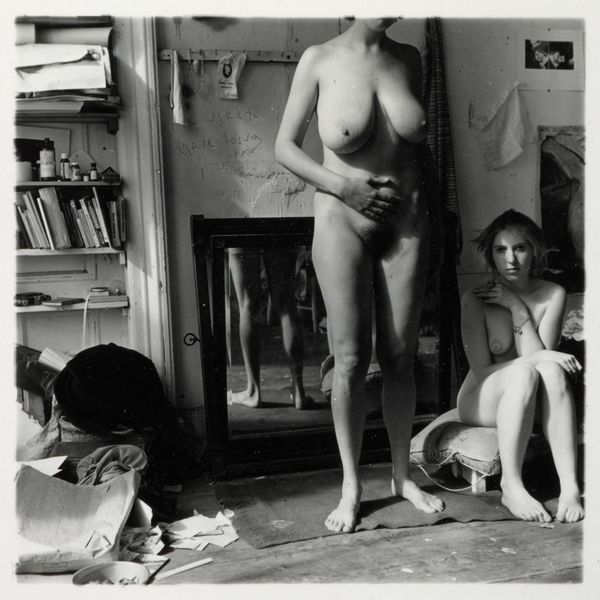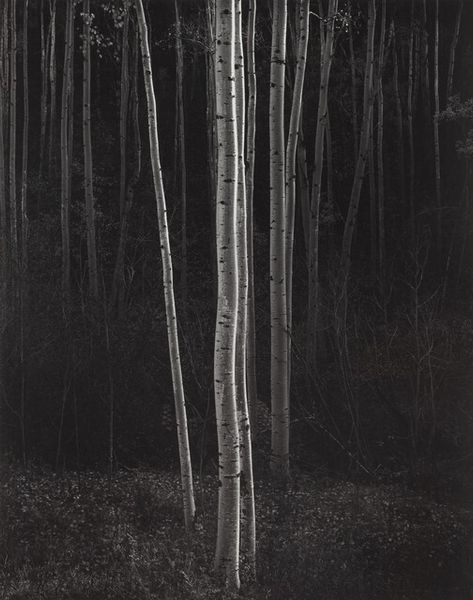
Sabatine-Miller Graduation Party, Martins Creek, Pennsylvania 1977
0:00
0:00
photography
#
portrait
#
landscape
#
photography
#
monochrome photography
#
genre-painting
#
realism
Dimensions: image: 35.4 × 35.5 cm (13 15/16 × 14 in.) sheet: 50.4 × 40.5 cm (19 13/16 × 15 15/16 in.)
Copyright: National Gallery of Art: CC0 1.0
Editor: This is Larry Fink's photograph "Sabatine-Miller Graduation Party, Martins Creek, Pennsylvania," from 1977. The stark contrast of the figures against the deep, almost consuming darkness creates a sense of both intimacy and isolation. The washing line adds such a curious element, like a mundane still life in a fleeting, private moment. What strikes you about it? Curator: Fink often turned his lens towards moments of leisure and celebration, documenting social rituals, particularly within the working class. This image, taken at a graduation party, highlights the performative aspects of such gatherings. Think about how the clothesline becomes a stand-in, almost a signifier, for domesticity and the everyday labor that supports these fleeting moments of festivity. It makes me wonder, who’s graduation is it, and what does it mean to celebrate this event in such circumstances? Editor: I hadn't considered the performative aspect so directly. The clothes on the line definitely suggest a reality behind the celebration. Is he making a comment on the American Dream, perhaps? Curator: Potentially, but it's more nuanced than that. The lack of clarity, the shadowy figures—Fink is capturing the ambiguities within these communities. The very act of photographing, of documenting, brings an outside perspective into this insular world, raising questions about observation and representation. Editor: So, the politics of the image is as much about Fink's role as the photographer as it is about the subjects themselves? Curator: Exactly. He inserts himself, even as he observes, which compels us to reflect on the social dynamics at play – both in front of and behind the camera. Editor: I see. It's a lot more complicated than I initially thought. I guess photographs like these force us to question the stories we tell ourselves about success and community. Curator: Indeed. They encourage us to analyze whose stories are being told, by whom, and for what purpose, and to consider art as an agent for sparking critical conversations.
Comments
No comments
Be the first to comment and join the conversation on the ultimate creative platform.
